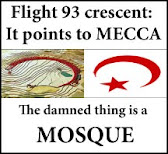 |
| Not your mother's Greyhound |
Sorry to disappoint those who thought I might have died or met with an 'unfortunate' accident.
I am around, very much alive and on the road back to becoming 'well' again. Well is a relative term and as long as we leave orthopedics and spinal issues out of the discussion, yes, I am doing well. Broke but surviving. Living the high life in the land of make believe and where POVERTY WITH A VIEW is a way of life.
Read an interesting article in our local pathetic newspaper that likes to pretend they are a conservative rag. The only ones who might buy this dribble are the progressive, regressive retards who listen to NPR, watch, believe everything they see, hear, read on PBS, NBC, ABC, CBS, PMSNBC is the unsanitized truth. These hard core liberals think George Soros, Huffington Post and Daily Kos are where reality lives and that the lies of climate change are real and the sky really is falling. Back to the article as I got a bit side tracked. The article is about Greyhound bus lines and how the company has come back and is finding its stride and place as a decent, economic way to travel and Americans are returning to this mode of travel.
What is wrong with PatriotUSA, writing about a long forgotten bus line which is still known for that ratty bus that had horrible bathrooms, rotten, uncomfortable seats and a usual passenger manifest that always seemed to have the mentally unstable and those who did not know the meaning of a shower or what a bar of soap and a razor is for. Personally, I have ridden the Grey dog many a time and yes, a few of those trips were downright bad. The one with the lady drenched in blood who was babbling non-stop, the trip to Los Angeles from Eugene, Oregon with half the bus the filled with stinky, smelly hippies and some things that resembled females but had more on their legs and in their armpits than I could ever have in 10 lifetimes. Or the 'express' that stopped at every rock, mailbox, or mile marker from L.A. to El Paso, Texas and I was the ONLY gringo on the bus. Maybe someday I will write a book of short stories, maybe....
Greyhound is far from dead. As one who loathes flying and who travels exclusively by train, I would ride the 'Dog' rather than fly. Taking Amtrak today can be a somewhat nasty experience given the severe cutbacks in service and an upper management team that is completely out of touch with those onboard who actually serve the passengers. Maybe just the name 'Greyhound' will keep Muslims away as most Muslims think and feel dogs are haram. Works for me.
I think I have found most of my marbles. Now the tricky part is putting them back in 'order'. No worries faithful readers. Snark, wit, intolerance of all things liberal, progressive, being extremely conservative and being total politically incorrect are very alive and well. If I disliked immorality, cheaters, those who engage in infidelity, flaky artists, musicians, politicians, communists, socialists, illegal alien invaders, tree huggers, hippies, prairie fairies, earth muffins, feminazis, those who believe in Globull warming and hate fossil fuels, Islam and sharia law before, sit back, read, watch, listen and hopefully enjoy. I hope to offend each and every one of you. I will probably offend myself.
PatriotUSA
*******************
A sleek, new, 100-year-old Greyhound hits the open road
By Andrea Sachs /
The Washington Post
It was nearing midnight when a sleek coach adorned
with galloping canines inched through the new Greyhound terminal in
Washington. The 45-foot-long vehicle rolled past a glass-enclosed ticket
counter emitting a warm glow, a wood-paneled waiting room and me
sitting on a bench, watching for the 12:01 bus to Chicago.
The driver pulled into a spot and hopped out,
dressed in the same shades of blue as his charge. Despite the hour and
the long road ahead, he was a ball of energy.
“The ride is faster than you think,” Tony Stevens
assured the dozen or so passengers bound for destinations between the
capital and the Midwest.
As part of the boarding process, Stevens matched our
IDs to our tickets. He looked at my ticket — Washington to Hibbing,
Minn. — and exclaimed, “I’ve been there. That’s where they have the
museum.”
And that was why I was going: to visit the Greyhound
Bus Museum in its place of birth 100 years ago this year. My pilgrimage
would take one day, 14 hours and 19 minutes and would include three
transfers (Chicago, Minneapolis, Duluth) and countless rest stops (RS
Midway Plaza, Pennsylvania; Tomah, Wisconsin; Pine City, Minnesota,
etc.).
I was also trying to give Greyhound a chance to redeem itself.
I last took the bus line several years ago to New
York. Two buses departed without me, even though I was standing in the
station and holding a ticket. (The company is serious about not
guaranteeing seats.) Once aboard a third bus, I sat beside a mentally
unstable man who was shouting into an imaginary phone about a CIA
conspiracy.
Defying its rep
Greyhound Lines has improved with age. In defiance
of its years, and its long-standing image as the chariot of absolute
last resort, the bus line is growing more youthful, more spirited and
more relevant. And much less scary.
“We’ve had a reputation that’s somewhat unfounded,”
said chief executive and president David Leach over the phone from
Greyhound headquarters in Dallas. “We had to figure out how we were
going to rapidly change the perception of our company.”
It’s a tough challenge. For years, a dark cloud of
disrepute has shadowed the bus company across North America. The
homeless camped out in the terminals. Riffraff and troublemakers
poisoned the atmosphere onboard. The bathrooms reeked; the seat fabric
itched. In the past decade, two murders — one of a driver, another of a
sleeping passenger — hardened the line’s image as dangerous.
Those incidents were the extreme, but a lax and uncontrolled party-bus atmosphere was commonplace.
“You don’t want to know how many times the bus
driver called the cops because of pot-smoking,” Christo Karsikis, a
passenger I met on the final leg, recalled of a Miami-to-Los Angeles
odyssey in 1979. “Those days, people were drinking on the bus. It was
fun.”
Add to these problems the return of the bus as a
viable and even fashionable mode of travel. On inter-city routes —
Washington/New York, Philadelphia/Boston, San Francisco/Los Angeles —
today’s highways host a parade of bold-colored vehicles, all rivals to
the sprinting pup.
“The stigma of bus travel has fallen,” said Joseph
Schwieterman, director of DePaul University’s Chaddick Institute for
Metropolitan Development in Chicago. To meet the competition and the challenges,
Greyhound has been drastically overhauling its strategies and rebooting
its image.
New practices
At Union Station, several of Greyhound’s game-changing initiatives are on view, a flat business plan brought to life.
Over the years, the company has started to relocate
many of its stations into “intermodal facilities,” or, less formally,
Malls of Transportation. It has abandoned the deserted islands in
shadowy neighborhoods for central hubs with links to other modes of
travel.
“We have new terminals in Nashville, Memphis and
Miami, and we’re building a new one in Baltimore,” Leach said. “In
Milwaukee, we cohabitate with Amtrak. The terminal is well-lit and
smells good.”
After 9/11, Greyhound followed the airline
industry’s lead and bulked up security. It installed plastic shields to
protect the drivers, added security forces in the terminals and
surveillance cameras in the vehicles, heightened screening, and rooted
out loiterers from the stations and disruptive passengers from the
coaches.
Humble beginnings
Greyhound gets around.
The bus line started small and humble, on a
two-mile patch of road in northern Minnesota, not far from my
disembarkation point at the Country Kitchen in Hibbing. Today, 1,229
vehicles serve more than 3,800 destinations in North America. The fleet
covered more than 5.5 billion miles last year.
When I finally descended the bus steps for the last
time, I found Ron Dicklich, the Greyhound Bus Museum’s acting director,
waiting for me. He ushered me into his car, and we set off on a
nostalgic trip down Greyhound Lane.
Carl Eric Wickman and Andrew “Bus Andy” Anderson
created the company in 1914 as a shuttle service for iron miners and
their families. The car salesmen initially used the unsold inventory
from their Hupmobile dealership to transport workers between the pit,
their homes and the commercial district of Alice. They charged 15 cents
per ride and made a $7.40 profit on the second day of business.
The Greyhound Bus Museum opened in 1987 and moved
to its current location on Greyhound Boulevard 12 years later. The
modest-yet-thorough attraction begins the journey with black-and-white
photos and a model of the first “bus,” the Hupmobile, a seven-passenger
automobile from the first half of the 20th century. The museum also owns
19 coaches, including several on display that guests can pretend-ride.
“It follows the progression of buses as they get better,” Dicklich said.
First up: the 1927 White Bus, which resembles a blue
school bus with a snowcapped top. Next in line: the 1936 Super Coach,
which introduced shocks, raised flooring and such cushiony comforts as
padded seating; and the 1947 Brill, a silver bullet with the first
overhead luggage racks.
Shift to the cities
On the graveyard run to Pittsburgh, Tony Stevens
kept his eyes locked on the road but his mouth moving as we discussed
Next Century Greyhound.
“It’s a shame that we don’t go there,” he said when I
asked about company changes, including chopping service to Hibbing.
“That’s our birthplace.”
Unfortunately, sentimentality doesn’t earn a profit.
In 2003, Greyhound redrew its map. Following the
national population shift from small towns to suburbs and metropolises,
it eliminated low-demand rural stops and started concentrating on dense,
urbanized routes. The company cut nearly 37 percent of its network,
including service to Hibbing.
But what the Hibbings of the U.S.A. lost, the
Washingtons and New Yorks gained. In 2008, Greyhound’s new line,
BoltBus, appeared on city curbs with nonstop service, fancy buses and
dollar-store prices. Two years later, Greyhound Express pulled up, a
near twin of Bolt with the exception of the pickup/drop-off points
(terminal, not curb) and the breadth of its reach (Express travels to
many towns between the cities).
Within the next 24 months, Leach said, “the entire
national network should be Expressified.” (About 60 percent to go.) The
company will Boltify its gray-haired system as well. At the moment,
travelers must present a printed ticket; an online reservation displayed
on your gadget won’t roll.
Tags: Greyhound, Continental Trailways, Bus lines. USA travel, Amtrak, Air travel, Ground transportation, Public transportation, Hibbing, Minnesota To share or post to your site, click on "Post Link". Please mention / link to the Patriot's Corner. Thanks!





























0 Comments - Share Yours!:
Post a Comment